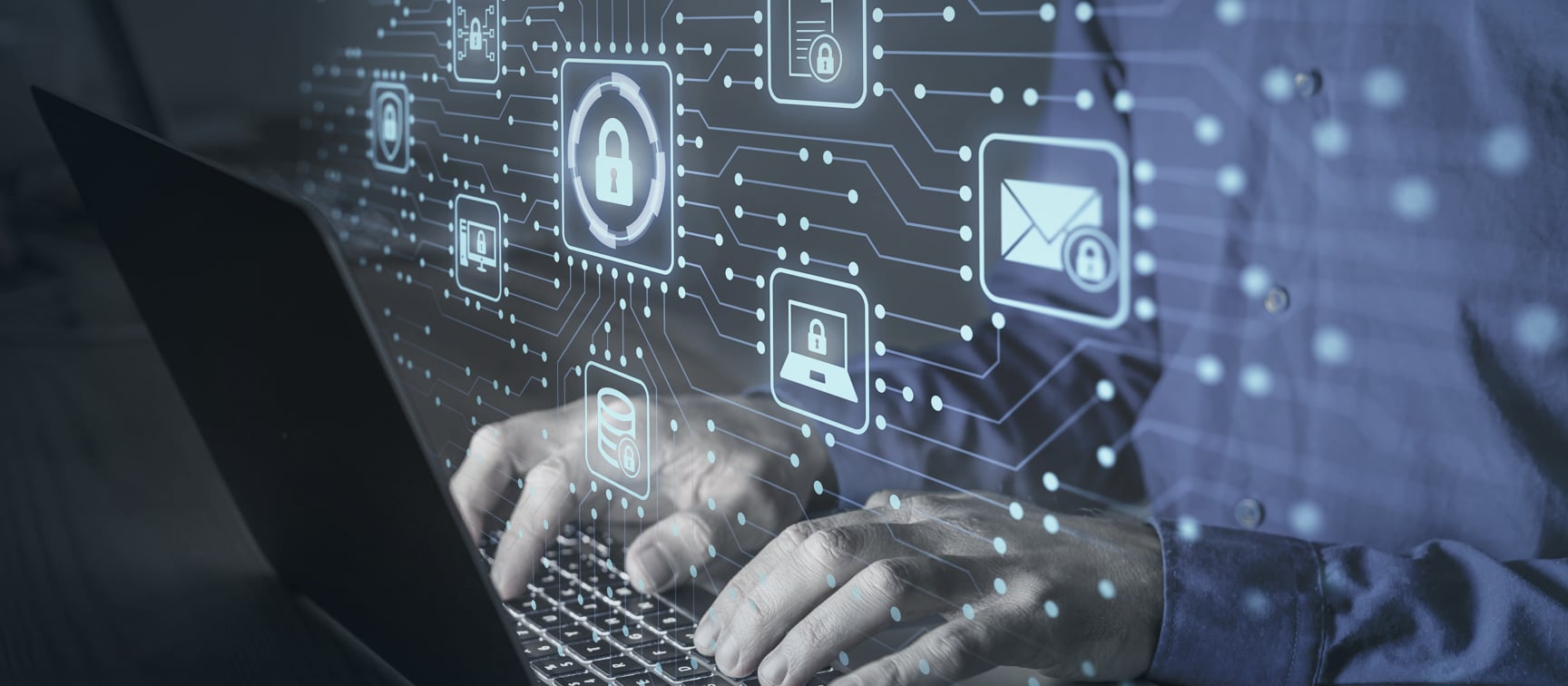Account Takeover: Why Dark Web Monitoring is Critical for Protecting Business
With customers fleeing at the first signs of data compromise few organizations can afford the aftermath of a well-targeted ATO attack.

Account Takeover (ATO) is a looming threat that compromises the security of online accounts, leading to financial loss and reputational damage for both individuals and organizations. In today’s digital age, where online interactions are a cornerstone of business and daily life, preventing ATO is imperative. Failure to do so can result in devastating consequences that ripple through every level of an organization. The scale and risk of ATO attacks increased by 354% from 2022 to 202, according to a report from Sift. This indicates that attackers perceive results from their efforts as a trend. It’s evident that cybersecurity teams are not stopping ATO. ATO prevention is not just a defensive measure; it’s a critical strategy to safeguard your organization’s financial stability and reputation.
The tools used by threat actors make it harder for you to detect malicious activity. Information stealers (Infostealers) are a particularly dangerous malware that infiltrate devices, covertly extracting sensitive data like login credentials and personal information. Your company’s sensitive data can be used to access accounts directly or sold on the dark web, increasing the risk of data breaches. It is crucial to understand how prevalent information stealers are and what they do.
It can be hard to recognize when your account has been compromised. Professional hackers are really good at their jobs and take precautions to make their activities look as authentic as possible. Alarmingly, only 43% of account takeover victims were notified that their information had been compromised (Sift). For a consumer, the longer a fraudster has access to a compromised account, the more time he has to make fraudulent transactions. If a business fails to notify users about exposed credentials, it risks facing immediate financial losses through chargebacks and inventory theft, as well as potential fines and legal repercussions.
For an enterprise, losing control of a corporate account can inflict extensive damage on both the organization’s financial stability and infrastructure even if the compromised account does not have privileged access. Once inside the system, the threat actor can escalate their account’s privileges and gain access to more sensitive information. Threat actors could steal intellectual property, client information, or trade secrets, which can then be sold on the dark web or to competitors
Beyond financial damage, a compromised account can provide a gateway to the organization’s broader IT infrastructure. With access to the company’s infrastructure a fraudster can damage it by installing malware, ransomware, or other malicious software, leading to system outages, data corruption, or even a complete shutdown of operations. This can cripple the company’s ability to function, disrupt business continuity, and result in costly recovery efforts. The compromised infrastructure not only weakens the organization’s security posture but also undermines trust with clients, partners, and stakeholders, potentially causing long-term reputational harm.
Identifying if an account has been compromised requires close attention to specific warning signs. These include unexpected login activity from unfamiliar devices, locations, or IPs even when multi-factor authentication (MFA) is in place — which may point to an account takeover vulnerability being actively exploited. — Other red flags are unauthorized changes to account settings, such as altered contact information, password resets, or the addition/removal of recovery emails. If you notice account activity that does not look normal it is a strong indicator that the attacker has been siphoning funds, conducting unauthorized transactions, or initiating fraudulent payments. Immediate action is crucial to limit the damage and restore control.
Early detection of ATO is crucial in mitigating the impact on your organization’s security and infrastructure. Key indicators include anomalous login activity, such as access from a strange IP address or device, which may indicate that a threat actor has circumvented standard authentication protocols. Even with robust security measures, unexpected logins should be thoroughly investigated. Another critical warning sign is unauthorized changes to account settings, including modifications to email addresses, phone numbers, or recovery options—often done to escalate privileges and maintain persistent access. Additionally, monitoring for unauthorized transactions, whether financial transfers, high-value purchases, or unusual communication patterns, is essential in identifying compromised accounts and preventing further exploitation. Finally, discovering your login credentials in stealer logs on the dark web is a clear indication that your account has been compromised and requires immediate action to prevent further damage.
If you suspect that your account has been taken over, immediate action is crucial.
Conduct a thorough investigation to identify the vectors through which the infostealer infiltrated the device, and implement corrective actions to strengthen your defenses. You can also consider deploying advanced security solutions.
Adopting and upholding strict cyber hygiene is necessary for the proactive process of preventing account takeovers (ATOs). Cyber hygiene refers to the policies and procedures that businesses implement to guarantee the security and dependability of their networks, devices, systems, and data. Defending sensitive data from cyberattacks and data breaches is the primary objective.
Protecting user accounts involves more than stopping unauthorized access. It also involves protecting the organization’s essential data and organizational assets. Implementing account takeover solutions in conjunction with dark web monitoring can help teams detect risks earlier and respond faster across the entire account lifecycle. The following are essential strategies for strengthening your company’s security posture:
Most account takeover and password-related incidents rely on the target having a weak, common, or repeated password that the threat actor can easily guess. Companies should ensure that all employees use long, complex, unique passwords for their accounts. Strong passwords are:
It can be hard to remember all of these requirements. You can use a password generator to help create passwords that are a random mix of numbers, letters, and symbols and a password manager to remember which password belongs with which account.
Cyber teams should regularly monitor the dark web to keep track of whether your login credentials have been compromised. By monitoring dark web forums and marketplaces, you can quickly identify if your account information is being sold or discussed among malicious actors. This proactive approach allows you to take immediate action, such as changing passwords or enabling additional security measures, before your account is exploited.
Why is this important? Companies need a way to consistently scan the dark web for indicators of data breaches on social media platforms or dark web forums and the sale of enterprise-level company databases containing personally identifiable information (PII) of prominent executives, staff members, and clients.
Establish a routine for monitoring and auditing account activity. Regularly review access logs for any signs of unusual logins, unexpected changes to account settings, or unauthorized transactions. Early detection of these anomalies is essential for mitigating the impact of potential breaches and for maintaining the integrity of corporate accounts.
Conduct regular training sessions to educate employees about phishing threats and tactics. Cybercriminals frequently use phishing attacks to deceive users into disclosing their login credentials. Encourage vigilance against unsolicited communications and provide guidance on verifying the legitimacy of emails or messages before clicking on links or divulging sensitive information. If an employee’s account is compromised, they must re-enroll in security training for their future safety.
Maintain up-to-date operating systems, applications, and security software across your organization. Regular updates often include critical patches for common vulnerabilities and exposures (CVE). Keeping software current reduces the risk of exploitation and helps protect against emerging threats that could jeopardize account security.
Additionally, cyber teams should scan the dark web to learn which Common Vulnerabilities & Exposures are relevant to your technology. This knowledge empowers cyber teams to take a strong proactive approach by:
Adopt a zero-trust architecture to further fortify your security posture. Zero-trust assumes that no user or device is inherently trusted, even if they are within the network perimeter. This approach involves continuously verifying the identity and security posture of users and devices before granting access to resources. By enforcing strict access controls and monitoring all network activity, zero-trust helps mitigate the risk of unauthorized access and account takeovers.
Mobile devices are particularly vulnerable to account takeover because they go everywhere with us and are used for almost everything. There are specific malware and malicious apps that are designed to hack Android and iOS devices. Additionally, leaked phone numbers can be used by attackers for social engineering or to bypass security measures, making it crucial to protect your mobile device and personal information from unauthorized access.
In addition to immediate actions, implementing best practices for managing account takeover incidents can enhance your overall response strategy. Create a detailed incident response plan that includes specific protocols for different types of breaches and designate a response team trained to handle ATO situations. Regularly conduct simulated attacks to test and refine your response procedures, ensuring that your team is prepared for real-world scenarios. Communicate transparently with affected users and stakeholders to maintain trust and provide clear instructions on mitigating any damage. By embedding these practices into your security framework, you can improve your organization’s resilience against account takeover fraud.
Data breaches happen before a member of the cyber security team is notified. Once a threat actor has access to sensitive information, it is too easy for them to sell compromised login credentials on data leak sites on the dark web or use this information for credential stuffing attacks and business email compromise. Compromised employee PII or customer data can be sold on the dark web and used for account takeover (ATO), leading to significant financial losses and reputational damage.
Dark web monitoring solutions, like Lunar by Webz.io, are an essential part of the solution for preventing account takeover. Continuously monitoring the dark web allows cyber security personnel to track infected devices, reduce the company’s attack surface, mitigate the risks, and stop account takeover.
When someone breaks into a company account, it’s never just that specific account at risk. Attackers can uncover sensitive data, pretend to be employees, or use the access to move laterally into other systems. Even accounts without special permissions can cause real damage. The fallout of account takeover often includes financial loss, service disruptions, legal issues, and a hit to customer trust. One breach can set off a chain reaction, which is why account takeover prevention needs to be a core part of any business continuity plan.
The dark web can tip off security teams to risk before anything actually happens. Leaked logins, personal info, and access tokens often show up there first – sometimes long before anyone notices unusual activity inside a company’s systems. When security teams track these early signs, they can see which accounts are exposed and step in before an attacker gets through. It’s a way to catch threats that might otherwise slip past the radar. It also helps put other alerts in context, so teams aren’t just guessing – they know what to prioritize and why it matters.
Dedicated account takeover tools help security teams stay one step ahead. They keep an eye out for leaked passwords, anomalous login attempts, and other signs something’s not right. Some tools connect outside intel with what’s happening inside the company, so it’s easier to spot real threats. Others can take quick action on their own – like locking an account or forcing a password reset. Having everything in one place means teams spend less time digging through alerts and more time actually stopping problems before they spread.
Talk to a dark web expert to discuss how we can help your organization protect itself from account takeover – whether you need a dark web monitoring tool or dark web data to automate your own dark web monitoring solution.

With customers fleeing at the first signs of data compromise few organizations can afford the aftermath of a well-targeted ATO attack.

Cybersecurity teams are now turning to the dark web for Indicators of Compromise.